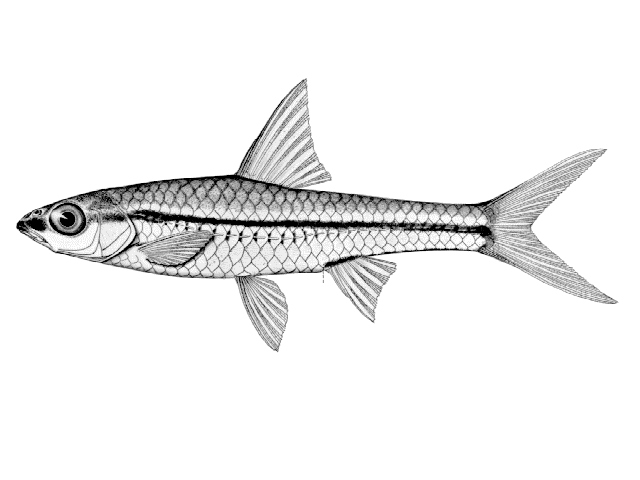| Cyprinidae (Minnows or carps), subfamily: Smiliogastrinae |
| 7 cm SL (male/unsexed) |
|
benthopelagic; freshwater |
| Africa: Okavango (Ref. 52193, 120641), Kafue River (Ref. 2801) and (upper) Zambezi in Angola (Ref. 11970, 120641). Also known from the Cunene (Ref. 7248, 52193, 120641) and Zambian Congo systems (Ref. 7248, 52193). |
|
Dorsal spines (total): 0-0; Dorsal soft rays (total): 10-11; Anal spines: 0-0; Anal soft rays: 8-9. Description: Body slender, fusiform, pointed; mouth small and terminal, with a single pair of minute barbels; barbels extremely short; anterior barbel sometimes absent or minute when present; posterior barbels up to less than half eye diameter (Ref. 13337, 52193). Breeding males with small conical tubercles on the snout (Ref. 13337, 52193). Dorsal fin with 3 unbranched and 7-8 branched rays; anal fin with 3 unbranched and 5-6 branched rays (Ref. 13337, 52193). Scales in lateral line 29-33, 12 around caudal peduncle (Ref. 52193). Colouration: Translucent brown, silver on sides and below, fins pale yellow; a distinctive straight black stripe from tip of snout to caudal-fin base, irregular black spots along midline of back, a black spot at base of anal fin (Ref. 52193). |
| Found in shallow, well-vegetated streams, floodplains and marshes (Ref. 52193). It feeds on small aquatic insects and algae (Ref. 52193). Breeds in summer, laying eggs amongst vegetation (Ref. 7248, 52193). Undertakes seasonal movements which might be correlated with spawning (Ref. 13337). |
|
Least Concern (LC); Date assessed: 01 May 2006 Ref. (130435)
|
| harmless |
Source and more info: www.fishbase.org. For personal, classroom, and other internal use only. Not for publication.
